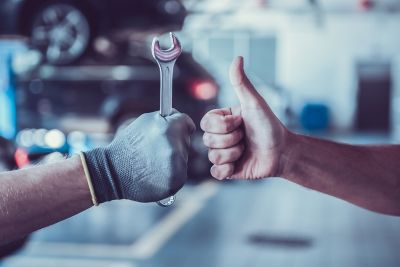When choosing a piston compressor — also known as a reciprocating compressor — the initial purchase price is only part of the story. What really matters is the total cost of ownership, including both CAPEX (Capital Expenditure) and OPEX (Operational Expenditure) throughout the compressor lifecycle.
A key decision is whether to opt for an oil-lubricated or oil-free model. While both rely on the same mechanical principle, they differ in how they manage lubrication and air quality — and that affects both short- and long-term costs.
This article provides a detailed cost breakdown of the two technologies to help you make an informed and cost-efficient choice.
Table of Contents
- Understanding the Two Technologies
- Capital Expenditure (CAPEX)
- Operational Expenditure (OPEX): Maintenance and Servicing
- Operational Expenditure (OPEX): Energy Consumption
- Air Quality and Contamination Risk (OPEX & Indirect Costs)
- Lifecycle and Long-Term Value
- Summary: Cost Comparison Based on CAPEX & OPEX
- Choosing What Pays Off in the Long Run
Understanding the Two Technologies
Piston compressors compress air using reciprocating piston. The difference lies in how friction is managed inside the cylinder:
- Oil-lubricated compressors use oil within the compression chamber to lubricate and cool components.
- Oil-free compressors rely on self-lubricating materials or dry-running designs to eliminate oil from the compression process entirely.
This difference has clear implications for air quality, servicing, and cost.
Capital Expenditure (CAPEX)
CAPEX refers to the initial investment made when purchasing the equipment.
- Oil-lubricated piston compressors generally come at a lower upfront cost. Their construction is simpler, and parts are widely available.
- Oil-free piston compressors tend to have a higher purchase price, especially those engineered for applications requiring pure, uncontaminated air.
CAPEX comparison:
- Oil-lubricated = Lower initial investment
- Oil-free = Higher upfront cost, but may reduce long-term operating expenditure
Operational Expenditure (OPEX): Maintenance and Servicing
OPEX includes all ongoing costs related to operating and maintaining the compressor.
Oil-lubricated compressors
- Require regular oil changes
- Need oil filters (and sometimes separators) replaced at set intervals
- Incur servicing costs and potential downtime for scheduled maintenance
Oil-free compressors
- Eliminate the need for oil and oil-related parts
- Require less routine maintenance overall
- Are easier to maintain in environments where service access is limited
OPEX comparison:
Oil-free compressors reduce servicing and consumables costs, while oil-lubricated models involve recurring maintenance tasks and materials.
Operational Expenditure (OPEX): Energy Consumption
Although often overlooked, energy use is a significant cost over a compressor’s lifetime.
Energy efficiency depends more on correct sizing and application than lubrication type.
Both oil-free and oil-lubricated piston compressors offer comparable energy performance under appropriate operating conditions
OPEX comparison:
No substantial energy cost difference between the two technologies when used within design limits.
Air Quality and Contamination Risk (OPEX & Indirect Costs)
In applications where clean air is a requirement — such as food packaging, dentistry, laboratories, or electronics — air quality becomes a cost factor.
- Oil-lubricated compressors require downstream filtration systems to prevent oil carryover into the air network
- Oil-free compressors deliver clean, oil-free air by default, reducing or eliminating the need for additional air treatment
Cost impact:
Oil-free compressors help lower air treatment costs and reduce the risk of product contamination or compliance failures — a relevant factor in many industries.
Lifecycle and Long-Term Value
When properly sized and maintained, both oil-free and oil-lubricated piston compressors can provide long-lasting performance.
- Lifecycle duration is determined by factors such as build quality, usage conditions, servicing discipline, and spare parts availability
- The lubrication method alone does not define a compressor’s durability
Cost impact:
Lifecycle value is comparable across both technologies, provided they are applied correctly and supported over time.
Summary: Cost Comparison Based on CAPEX & OPEX
| Cost Factor | Oil-Lubricated Piston | Oil-Free Piston |
|---|---|---|
| CAPEX | Lower initial investment | Higher purchase cost |
| OPEX – Maintenance | Higher (oil, filters, labour) | Lower (minimal servicing) |
| OPEX – Energy | Comparable | Comparable |
| OPEX – Air Treatment | Requires filtration | Clean air by default |
| Lifecycle | Long when maintained | Long when properly applied |
Choosing What Pays Off in the Long Run
From a cost perspective, the choice between oil-lubricated and oil-free piston compressors depends on how you balance CAPEX and OPEX.
- If your goal is a lower initial investment, and you're able to manage ongoing maintenance, an oil-lubricated compressor may offer strong value.
- If you prioritise air purity, ease of servicing, and reduced operational overhead, an oil-free compressor may prove more economical in the long term.
Ultimately, the most cost-effective solution is the one that fits your specific application, operating conditions, and long-term expectations — not just the one with the lowest price tag.














